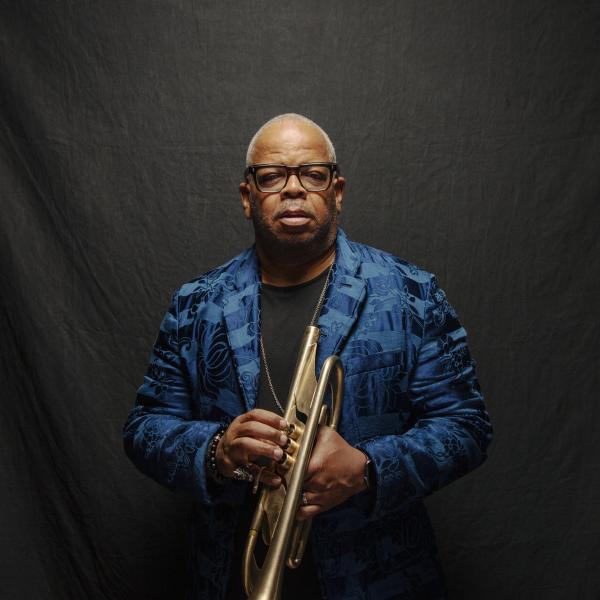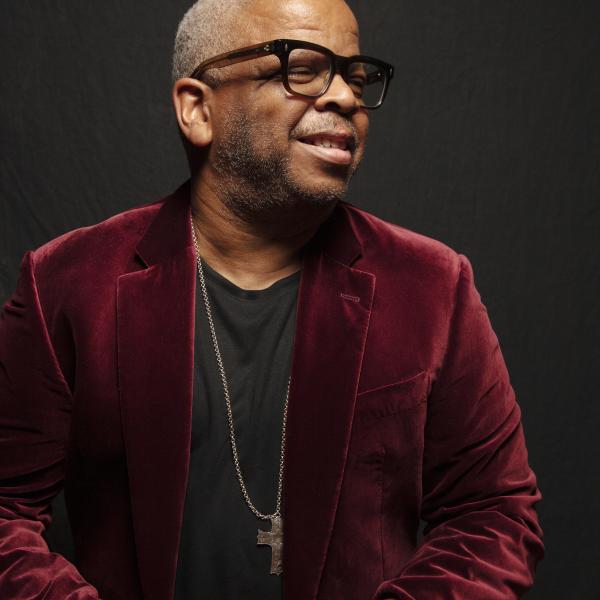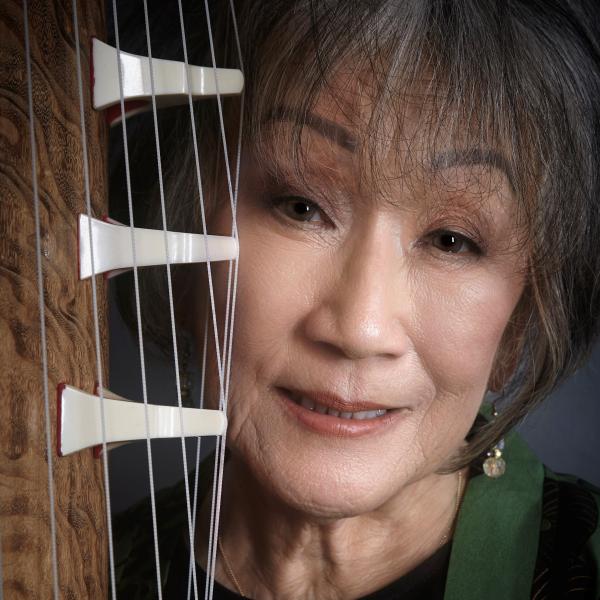Quick Study: March 17, 2022
Jo Reed: I’m Josephine Reed. Welcome to “Quick Study,” the monthly podcast from the National Endowment for the Arts. This is where we’ll share stats and stories to help us better understand the value of art in everyday life. Sunil Iyengar is our pilot. He’s the Director of Research & Analysis here at the Arts Endowment. Hey, Sunil.
Sunil Iyengar: Hi, Jo.
Jo Reed: So what do you have for me today?
Sunil Iyengar: Well, Jo, you had asked me some while back to say a few words about the phenomenon of social prescribing, because you may remember I mentioned it casually in a previous installment of “Quick Study,” and it piqued your interest. So I thought maybe we could explore this practice and its relevance to participating in the arts.
Jo Reed: Oh, I’m so glad you’re doing this. Let’s start with a description of what social prescribing actually is.
Sunil Iyengar: Sure. So social prescribing is when a general practitioner or primary care provider refers a patient to nonmedical services that they might find in their own community. So these are nonclinical options such as gardening, cooking, nature walks, sports, taking part in social events, and of course, arts and cultural activities. The practice is most robust, I would say, in the UK, where just this week celebrated National Social Prescribing Day.
Jo Reed: Oh, my God.
Sunil Iyengar: Yeah. Social prescribing has really caught on since the NHS’s long-term plan for healthcare was established in 2019. The model allows for personalized care within community settings, and it’s tailored to people’s interests. According to the NHS, this means it can address what are called the social determinates of health and can help to root out health inequalities.
Jo Reed: Okay. Back up for a second.
Sunil Iyengar: Sure.
Jo Reed: Because what are some of the social determinates of health? What does that mean?
Sunil Iyengar: Oh, yeah. So we’re really talking about any number of factors, such as the social and community context of patients, you know, their access to housing, transportation, the quality of their neighborhoods and local amenities, but also whether they grapple with racial discrimination, issues of crime or safety, as well as the status of their education, income and mobility. This could also mean such things as whether they have a nutritious and physically fit lifestyle, a whole host of considerations that arguably have not been the focus of medical training, as you understand it.
Jo Reed: So then how does social prescribing actually work?
Sunil Iyengar: Well, as far as I can figure out, there seem to be three distinct features of social prescribing. One is the healthcare professional must be trained in or have access to social prescribing as an option to complement pharmaceutical or medical care. Second, and this is crucial, there should be what the UK calls a social prescribing link worker available to the health professional. Link workers are advisors and connectors. They help patients navigate the array of community services that might be right for them. Third, there often need to be strong partnerships between the healthcare provider and local community organizations that can offer the services requested. So in the UK, for example, Arts Council England has contributed to something called the Thriving Communities Fund, which aims to boost social prescribing options locally for communities, quote “most impacted by the COVID-19 pandemic,” namely black, Asian and ethnically diverse communities, they say.
Jo Reed: So does this mean the movement has gathered steam over the last couple of years like through COVID?
Sunil Iyengar: I’m not sure that it’s necessarily gained ground during the pandemic, but I would point to a few developments in recent years that may have elevated the arts role within social prescribing. One was a report from 2019, what’s called a scoping review, commissioned by the World Health Organization. It reviewed evidence on the arts’ capacity to important health and well-being. The report was authored by Daisy Fancourt, and she’s an epidemiologist, researcher, and her team from the University of College London. Based on a sweep of evidence, they were fairly bullish about the arts’ role, not only in managing and treating chronic and acute conditions, Jo, but also in disease prevention and health promotion.
Jo Reed: Well, we’re not exactly strangers to this conversation.
Sunil Iyengar: No, we’re not. It’s something you and I have often discussed. So this report that I mentioned hit a nerve in the U.S., where there’s growing interest in arts and health programs and interventions. First of all, there’s a dynamic and flourishing set of fields represented by creative arts therapies, that is visual art, music, dance, or creative movement in theater, used in clinical and nonclinical settings. There are also what are called sort of arts infused programs in healthcare settings, programs that may not be offered by someone licensed or certified to offer therapy, per se, but they can be very useful, especially when integrated with other care options. Some of these programs are represented by the National Organization for Arts in Health, or NOAH.
Jo Reed: Well, the NEA has been involved with healing arts for years.
Sunil Iyengar: Yeah, we are, and we have been. At the NEA, we fund several arts in health programs, and those using creative arts therapies. I guess our flagship program here must be Creative Forces, in partnership with the U.S. Departments of Defense and Veterans Affairs and others, where we support creative arts therapies for military and veteran populations exposed to trauma, as well as their families and caregivers. What’s exciting about Creative Forces in this context is that we’ve teamed up with a regional arts organization, Mid-America Arts Alliance, to offer grants supporting community arts organizations that want to work with military-connected participants to improve their health, well-being and overall quality of life.
Jo Reed: Well, that does kind of sound like social prescribing to me. How popular is the practice here in the U.S.?
Sunil Iyengar: It hasn’t yet caught on quite, though optimists would say there’s maybe greater potential than ever before, maybe since the pandemic. The White House has been talking about the need to address the social determinates of health, such as the wider community context for patients, most recently around issues concerning mental health policy. Mass Cultural Council was one of the first organizations in the country to try to advance social prescribing of the arts. They conducted a statewide pilot of a social prescribing program involving about a dozen arts and cultural organizations working with healthcare providers.
Jo Reed: Have there been any results from the pilot or is it too soon?
Sunil Iyengar: You know, to be fair, there still needs to be a lot of research done to establish the efficacy and cost-effectiveness of such options, though one would wager that there are bound to be fewer, if any, side effects, comparative current practices. <laughs> One initiative that folks out there might want to keep an eye on is called Improving Community Health and Resilience through the Arts. This initiative was announced a few months ago by the National League of Cities, working with One Nation/One Project, and other organizations. The goal is to bring together artists or arts organizations, community health centers and municipal leaders across 18 different cities to try to use collaborative art making to important health outcomes. The research director for this initiative is Jill Sonke, from University of Florida’s Center for Arts in Medicine, which also runs the EpiArts Lab, a NEA designated research lab that’s mining large longitudinal data sets to better understand the relationship between the arts and health.
Jo Reed: All roads lead to research, don’t they, Sunil?
Sunil Iyengar: Yes. For me, anyway here.
Jo Reed: <laughs>
Sunil Iyengar: The podcasts, certainly, and there’s a study on the horizon that I think listeners might like to know about, since you gave me that opening. We recently made an award to researchers at the University of North Carolina at Greensboro. We will be doing a systematic literature review and interviews with experts such as medical practitioners, health insurers, and artists to learn about current healthcare models that may lend themselves to social prescribing in the arts, particularly for older adults. So who know? Maybe, to invert the famous title by Sinclair Lewis, it could happen here.
Jo Reed: <laughs> Yes. I--
Sunil Iyengar: You like how I got that in there? <laughs>
Jo Reed: I’m very pleased, actually. <laughs> I really think this is such an exciting field to watch, with wonderful, wonderful possibilities. Thank you for talking about it.
Sunil Iyengar: It’s a pleasure.
Jo Reed: And I’ll talk to you next month. Thanks, Sunil. That was Sunil Iyengar. He’s the Director of Research & Analysis here at the Arts Endowment. You’ve been listening to “Quick Study.” The music is “We Are One,” from Scott Holmes Music. It’s licensed through Creative Commons. Until next month, I’m Josephine Reed. Thanks for listening.
In this episode, we discuss the phenomenon of social prescribing of the arts and its growing interest among arts/health researchers and practitioners.




